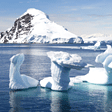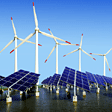- Home >
- Our Actions >
- Ambassador report
1
Comments
1. Himalayan region of Nepal: how shrinking glaciers are affecting the local economy |
|---|
|
Nepal has fragile geological condition, with great elevation differences and steep sloping terrain. It has the eight highest peak of the world including Mount Everest (8848 meters) also known as the Roof of the World. For developing countries like Nepal, climate change is not just an environmental phenomenon but also an economic, social and political issue. Nepal is among the most vulnerable countries on the Earth with regard to climate change, yet the level of understanding and awareness on the issue is very limited. It is reported that Nepal is ranked and listed as one of the most climate vulnerable countries in the world (GON, 2011). The temperature in plains is increasing at the rate of 0.03 ? and at the range of 0.06 to 0.12 ? per year in hilly and mountainous zones ( Shrestha et all, 1999). It is expected that the average temperature of Nepal in 2030 will be comparatively 1.4 degree centigrade more than in 1977-1999. The Greater Himalayas hold the largest mass of ice outside Polar Regions and are the water tower of Asia, being the source of the 10 largest rivers in this region. Rapid reduction in the volume of Himalayan glaciers due to climate change is occurring. |
|
|










 Previous : climate change and its possibl...
Previous : climate change and its possibl...









1 Comments
Thanks for sharing the impact of Climate Change on Himalayan Glaciers and Nepal's local economy. State Governments in Nepal must set laws to impose and encourage activities leading to reduction in carbon footprint as it is most vulnerable to climate change.
Posted 14-02-2015 04:48